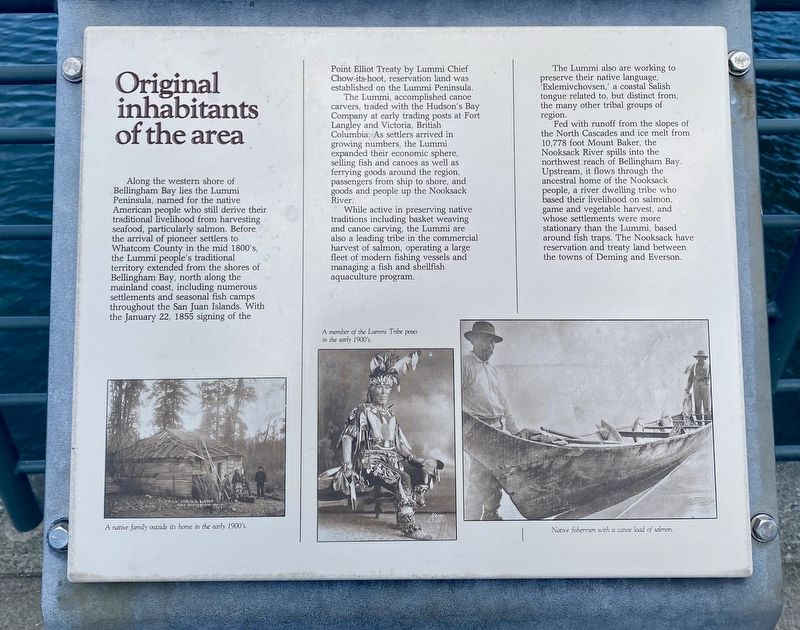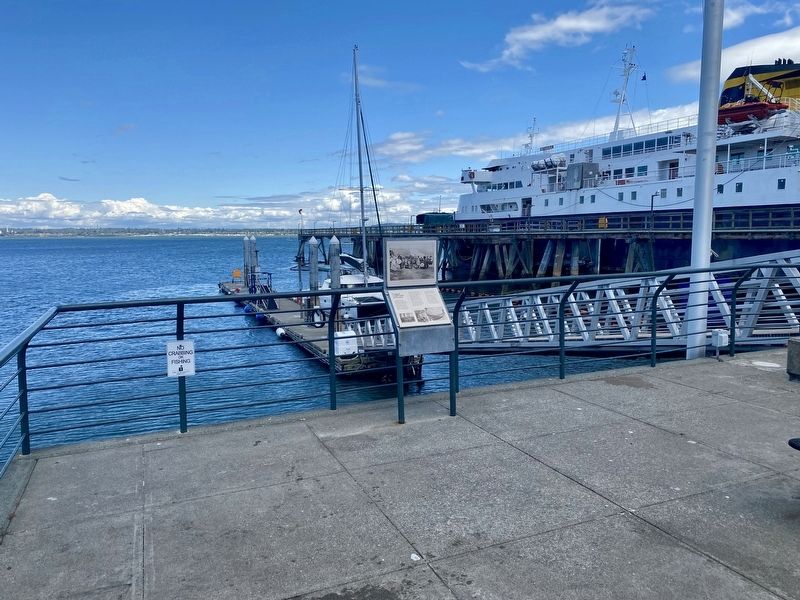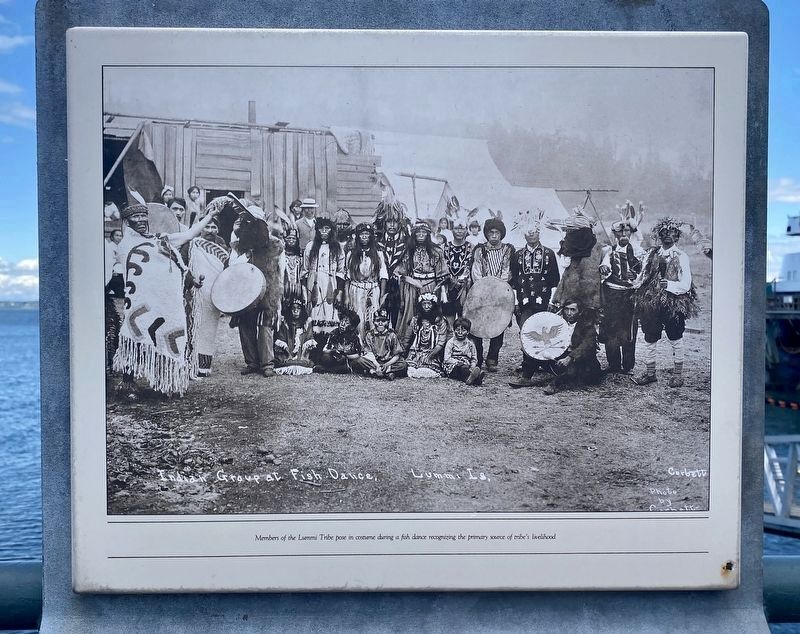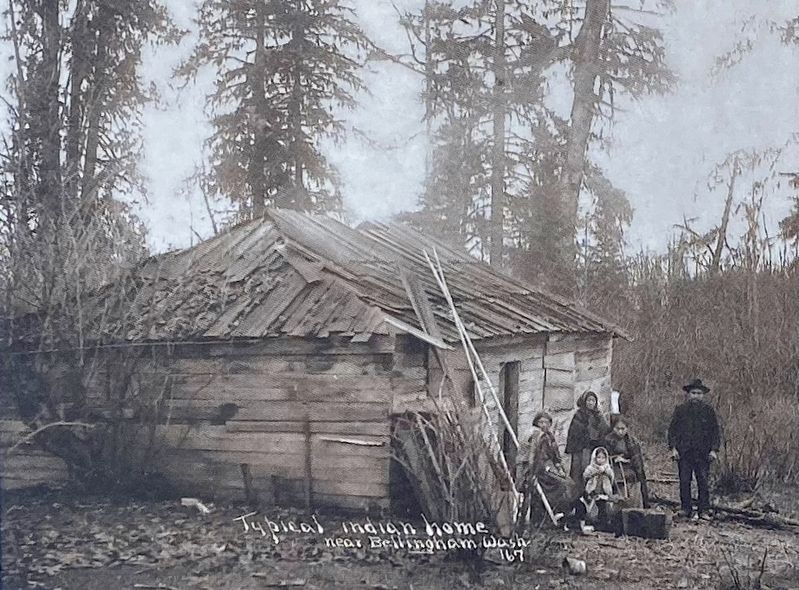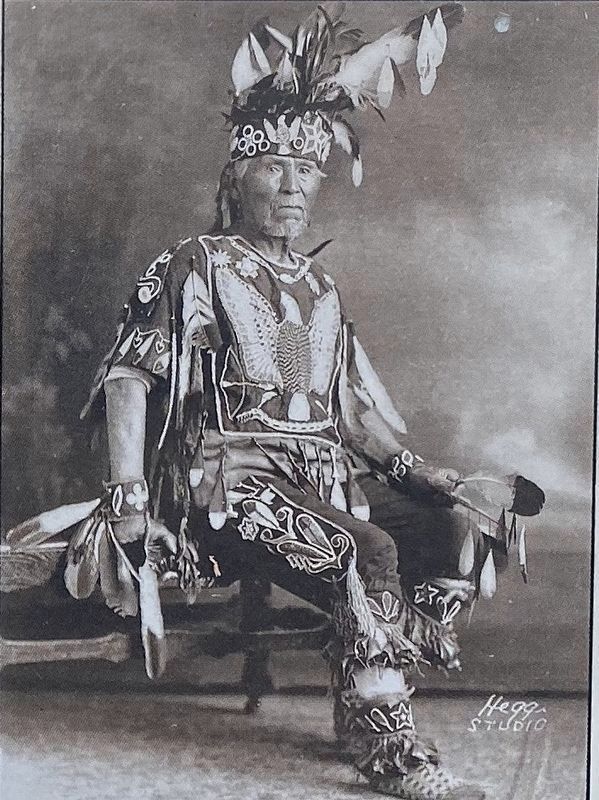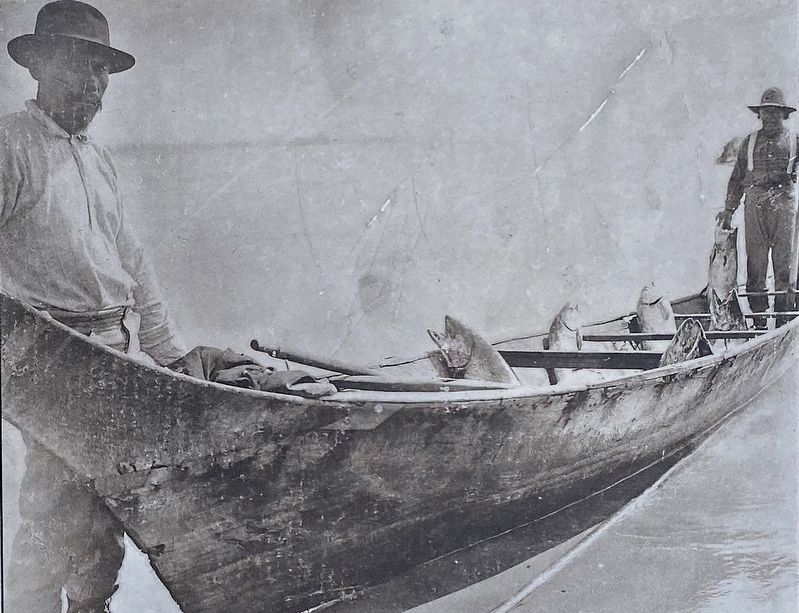Bellingham in Whatcom County, Washington — The American West (Northwest)
Original Inhabitants of the Area
Inscription.
Along the western shore of Bellingham Bay lies the Lummi Peninsula, named for the native American people who still derive their traditional livelihood from harvesting seafood, particularly salmon. Before the arrival of pioneer settlers to Whatcom County in the mid 1800's, the Lummi people's traditional territory extended from the shores of Bellingham Bay, north along the mainland coast, including numerous settlements and seasonal fish camps throughout the San Juan Islands. With the January 22, 1855 signing of the Point Elliot Treaty by Lummi Chief Chow-its-hoot, reservation land was established on the Lummi Peninsula.
The Lummi, accomplished canoe carvers, traded with the Hudson's Bay Company at early trading posts at Fort Langley and Victoria, British Columbia. As settlers arrived in growing numbers, the Lummi expanded their economic sphere, selling fish and canoes as well as ferrying goods around the region, passengers from ship to shore, and goods and people up the Nooksack River.
While active in preserving native traditions including basket weaving and canoe carving, the Lummi are also a leading tribe in the commercial harvest of salmon, operating a large fleet of modern fishing vessels and managing a fish and shellfish aquaculture program.
The Lummi also are working to preserve their native language, 'Exlemivchovsen', a coastal Salish tongue related to, but distinct from, the many other tribal groups of region. Fed with runoff from the slopes of the North Cascades and ice melt from 10,778 foot Mount Baker, the Nooksack River spills into the northwest reach of Bellingham Bay. Upstream, it flows through the ancestral home of the Nooksack people, a river dwelling tribe who based their livelihood on salmon, game and vegetable harvest, and whose settlements were more stationary than the Lummi, based around fish traps. The Nooksack have reservation and treaty land between the towns of Deming and Everson.
Topics. This historical marker is listed in these topic lists: Industry & Commerce • Native Americans. A significant historical date for this entry is January 22, 1855.
Location. 48° 43.321′ N, 122° 30.774′ W. Marker is in Bellingham, Washington, in Whatcom County. Marker can be reached from Harris Avenue. Touch for map. Marker is at or near this postal address: 355 Harris Avenue, Bellingham WA 98225, United States of America. Touch for directions.
Other nearby markers. At least 8 other markers are within walking distance of this marker. Pacific American Fisheries (a few steps from this marker); Early Bellingham Bay (a few steps from this marker); Northwest Shipbuilding Company (a few steps from this marker); Schooner Zodiac (a few steps from this marker); Fairhaven (within shouting distance
of this marker); Commercial Point Shipyard (within shouting distance of this marker); The 1909 Fairhaven Empress Tree (about 700 feet away, measured in a direct line); Site of Puget Sound Sawmills and Shingle Company (approx. 0.3 miles away). Touch for a list and map of all markers in Bellingham.
More about this marker. This marker is the fourth of nine related markers surrounding the perimeter of the Bellingham Cruise Terminal.
Also see . . . Lummi. Wikipedia entry (Submitted on September 22, 2023, by Larry Gertner of New York, New York.)
Credits. This page was last revised on September 22, 2023. It was originally submitted on August 7, 2021, by Andrew Ruppenstein of Lamorinda, California. This page has been viewed 329 times since then and 61 times this year. Photos: 1, 2, 3, 4, 5, 6. submitted on August 7, 2021, by Andrew Ruppenstein of Lamorinda, California.
